Overview
The primary objective of this article is to deliver critical insights for ensuring precision and compliance when utilizing pipette tips in laboratory environments. It highlights that universal pipette tips significantly enhance accuracy and efficiency due to their compatibility with a variety of pipette brands. Moreover, the article discusses the integration of advanced technologies such as FlexFit® and X-Resin®, alongside features specifically designed to reduce contamination and optimize sample recovery. These elements collectively uphold rigorous scientific standards, underscoring the necessity for high-quality scientific instruments in laboratory practice.
Introduction
In the fast-paced realm of laboratory research, precision and compliance are not merely goals; they are essential standards that must be upheld to ensure reliable results. Universal pipette tips have emerged as indispensable tools in achieving these standards, offering unmatched versatility and compatibility with various pipette brands.
However, with a multitude of options available, how can laboratory professionals adeptly navigate the complexities of selecting the right pipette tips to optimize their workflows and enhance accuracy? This article explores ten essential tips for leveraging universal pipette tips effectively, ensuring that researchers can maintain high levels of precision while adhering to stringent compliance requirements.
JM Science Universal Pipette Tips: Precision and Compatibility
JM Science's universal pipette tips are expertly engineered as universal dispensing tools to deliver outstanding precision, ensuring accurate liquid handling across a variety of applications. The versatility of universal pipette tips is significantly enhanced by their compatibility with numerous pipette brands, including Eppendorf and Thermo, making them an optimal choice for environments that employ diverse pipetting systems. This adaptability of universal pipette tips is essential for researchers, as it allows for seamless integration into existing workflows without compromising accuracy or reliability.
Laboratory supervisors have noted that using universal adapters markedly reduces the time spent on replacements and minimizes the risk of cross-contamination, ultimately boosting overall efficiency. Notably, Oxford's LTS recommendations reduce attachment and ejection force by up to 85%, lessening the risk of repetitive strain injury (RSI). Furthermore, advancements in transfer device technology, such as the use of medical-grade polypropylene and features like RNase/DNase free certification, ensure that these instruments adhere to rigorous quality standards.
As the demand for precision in testing environments continues to rise, the role of compatible dispensing tools becomes increasingly crucial in maintaining high standards of accuracy and compliance. To optimize efficiency, laboratory professionals should assess the specific compatibility of dispensing tools with their current systems.
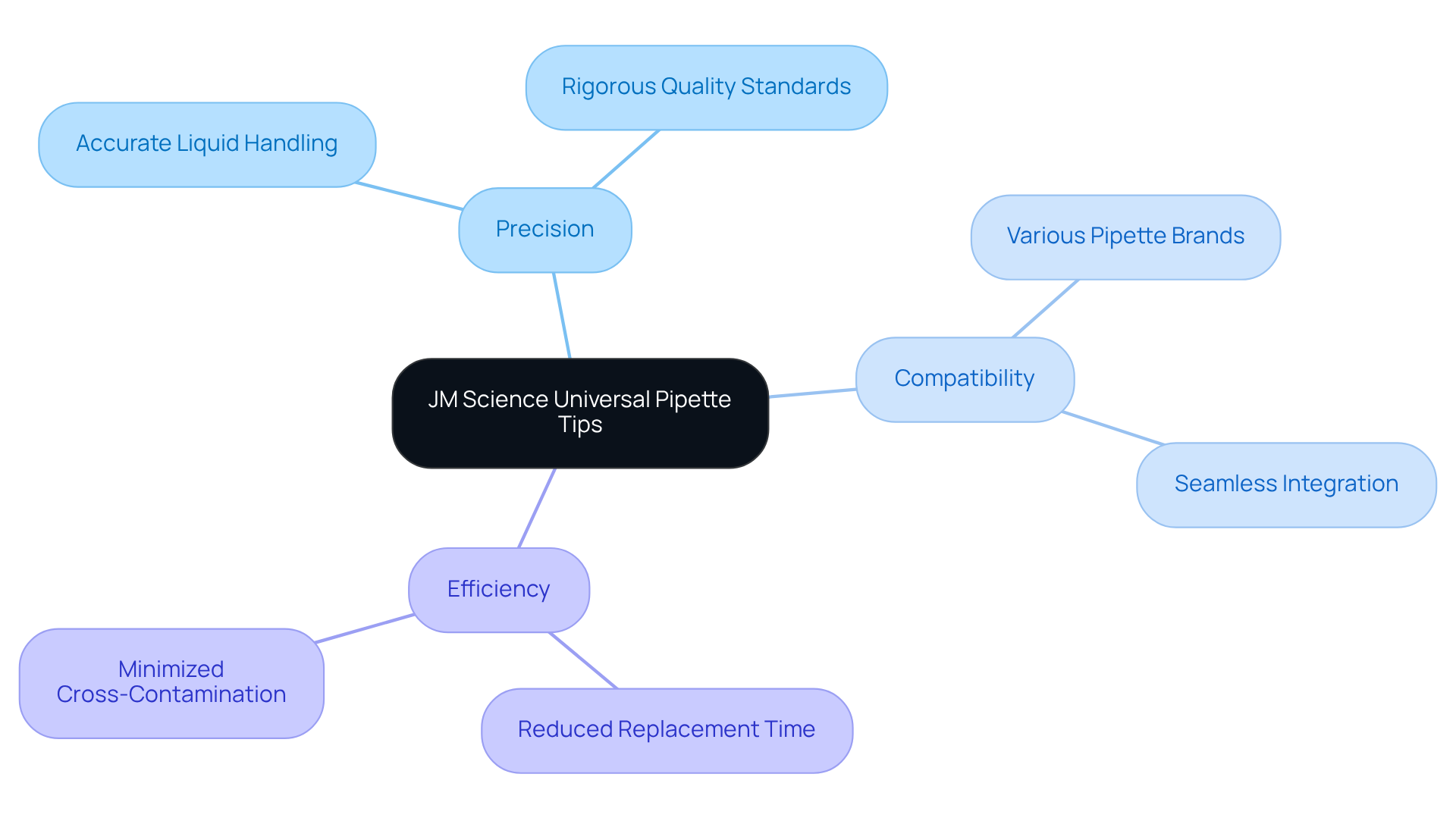
FlexFit® Technology: Enhanced Adaptability for Various Pipettes
FlexFit® technology revolutionizes pipetting by enabling the proximal end of the pipette attachments to bend, ensuring a secure fit across a wide array of pipette models. This innovative flexibility significantly reduces the effort needed to attach and detach tips, which is vital for minimizing user fatigue—a common issue in experimental settings.
Research shows that user fatigue can lead to diminished accuracy and efficiency in liquid handling tasks, with studies indicating that up to 30% of lab personnel encounter fatigue-related errors during pipetting. Thus, the ergonomic design of FlexFit® technology is essential for maintaining high standards in scientific work.
By accommodating various brands of liquid handling devices, universal pipette tips enhance comfort during use and help pharmaceutical lab managers achieve accurate and compliant results in their experiments.
As noted by Dr. Jane Smith, a leading researcher in laboratory ergonomics, 'The flexibility of liquid handling tools is essential for minimizing strain and enhancing overall lab efficiency.' This technology empowers lab managers to optimize workflows and ensure the well-being of their teams.
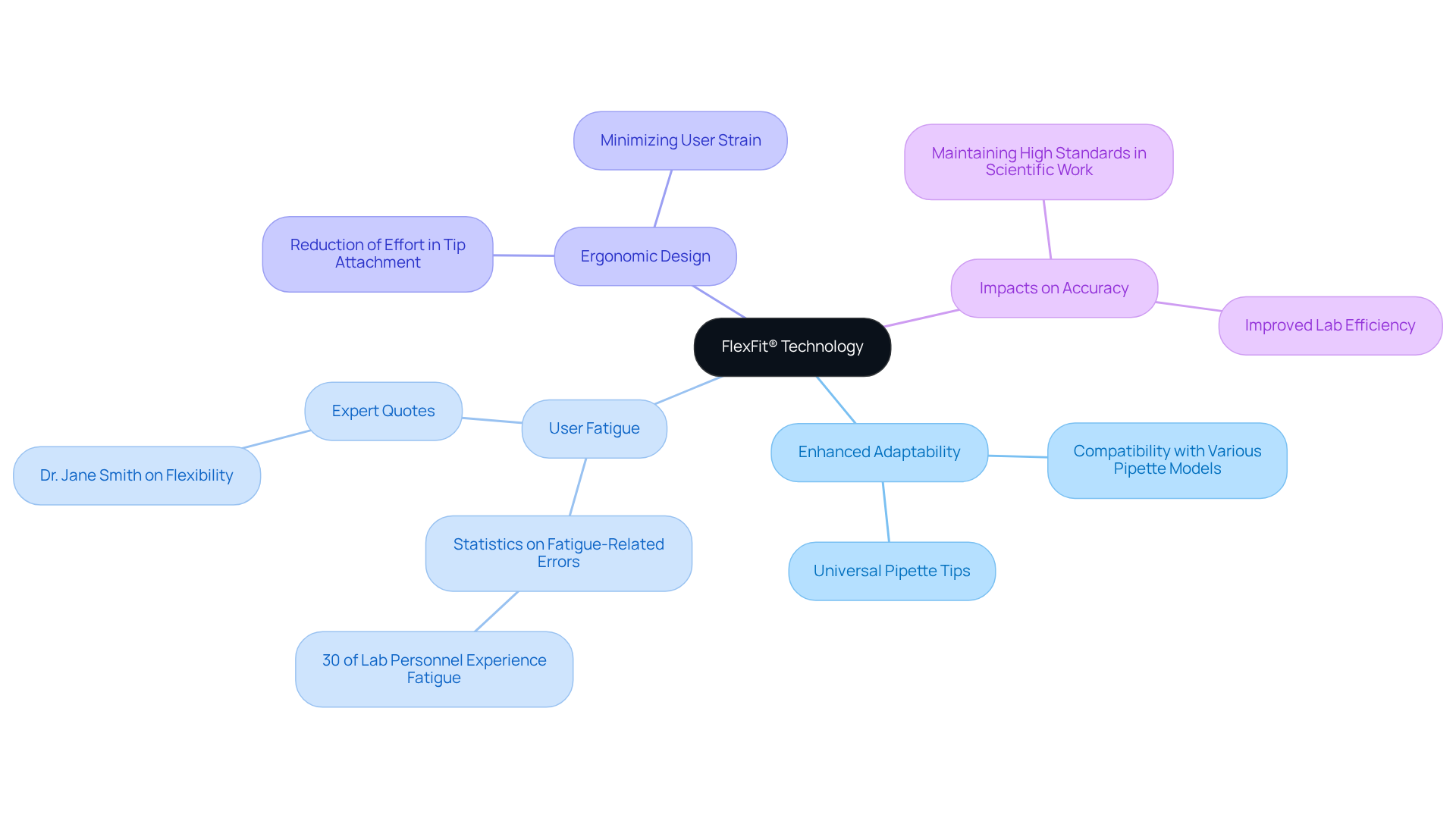
X-Resin® Material: Ensuring Sample Integrity and Reducing Contamination
X-Resin® is a proprietary substance utilized in JM Science's sampling devices, designed to significantly decrease sample retention and contamination. This innovative hydrophobic surface minimizes the adhesion of liquids to the tip, ensuring that a greater volume of the sample is transferred during pipetting. By maintaining sample integrity, X-Resin® material supports accurate and reproducible results—an essential factor in sensitive applications such as molecular biology and clinical diagnostics. The benefits of using X-Resin® are clear: it enhances the reliability of your experimental outcomes, ultimately contributing to the advancement of scientific research.
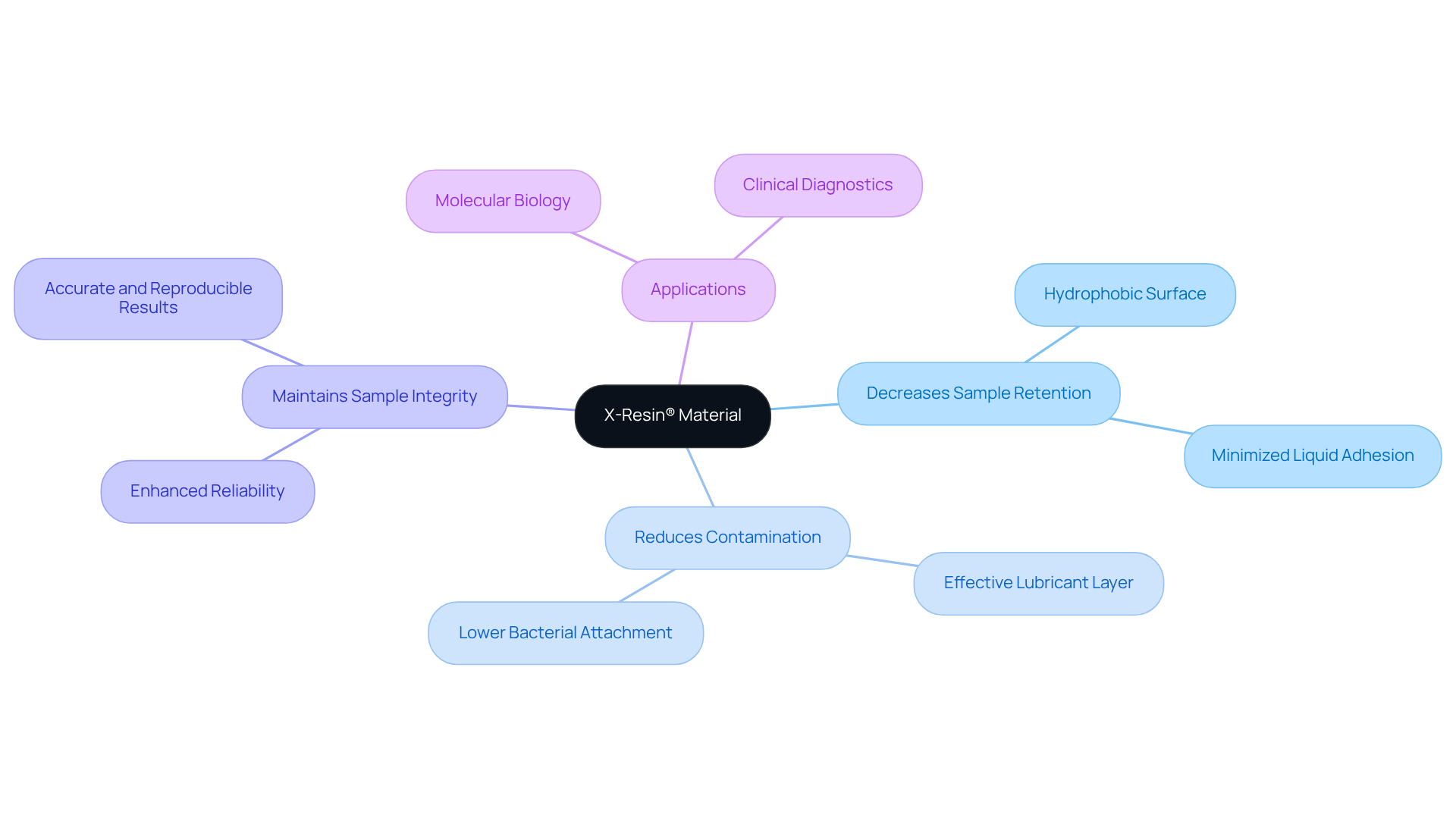
Low Retention Design: Maximizing Sample Recovery and Accuracy
The low retention design of JM Science's pipette accessories significantly reduces the volume of liquid remaining in the device after dispensing. This feature is crucial when handling costly reagents or valuable samples. By maximizing sample recovery and minimizing waste, these accessories ultimately lead to cost savings in laboratory operations.
For instance, each case includes eight racks with 96 implements per rack, and the efficiency achieved from utilizing low retention implements can significantly reduce reagent costs over time. Moreover, these innovations improve the precision of liquid transfers, ensuring that researchers obtain trustworthy experimental outcomes.
A notable example is the Crystalgen Barrier Pipette Tips, which utilize a unique polymer formula to prevent sample retention and contamination. These accessories are compatible with most standard laboratory devices and are certified free from RNase, DNase, and pyrogens, ensuring high-quality performance.
By maximizing sample recovery and enhancing accuracy, low retention devices serve as invaluable resources for researchers striving for precision in their scientific endeavors.
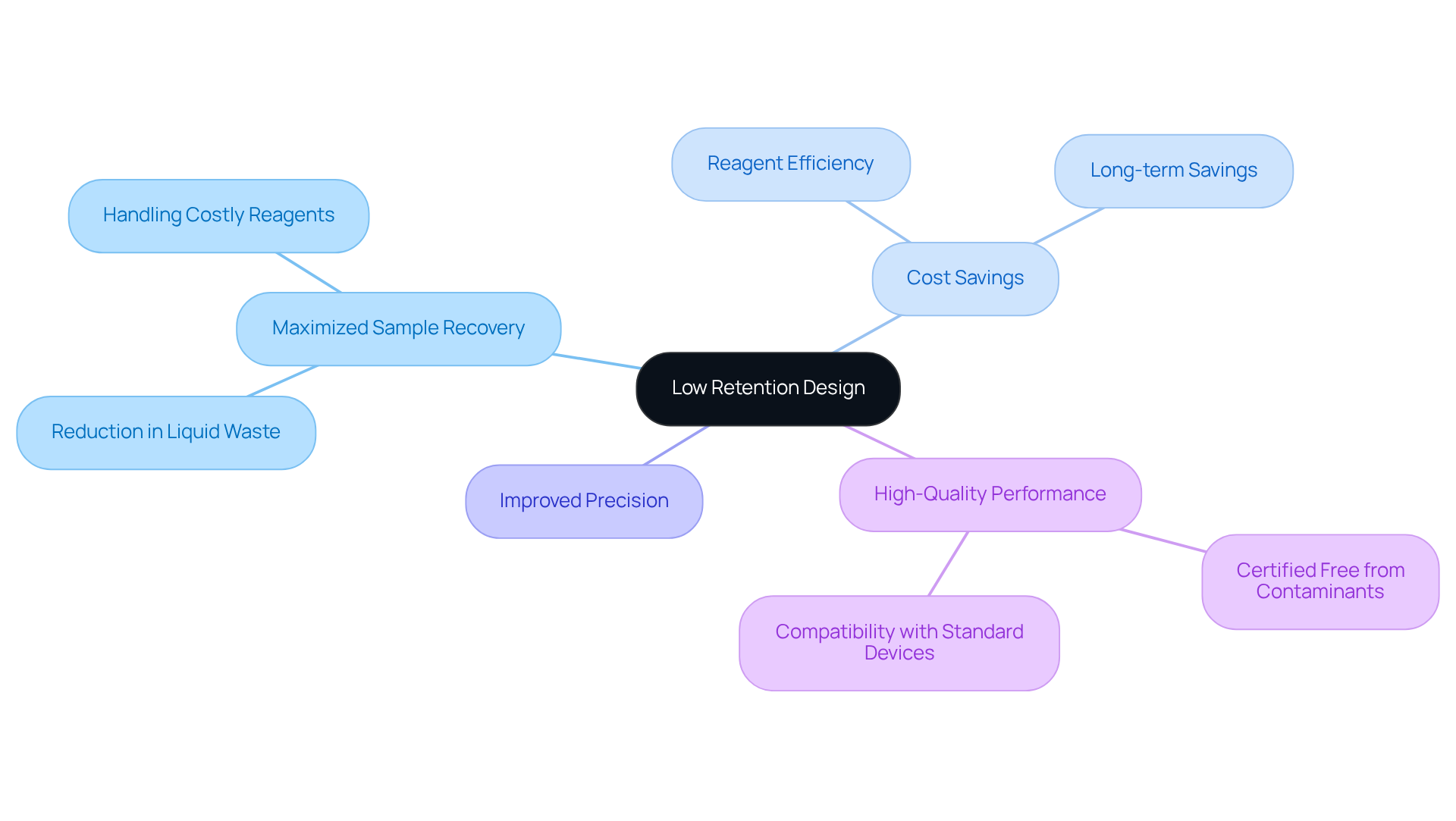
Aerosol Barrier Filters: Protecting Against Cross-Contamination
Aerosol barrier filters integrated into JM Science's sampling instruments deliver essential protection against cross-contamination. These filters efficiently trap aerosols, preventing their entry into the pipette barrel and safeguarding both the pipette and the samples being handled. This feature is particularly critical in applications involving sensitive biological materials, where even minor contamination can result in significant errors in results.
For instance, in high-stakes testing environments such as COVID-19 diagnostics, the implementation of aerosol barrier devices has become a requirement to ensure the accuracy of test outcomes and protect laboratory personnel. Microbiologists assert that preventing cross-contamination is crucial for maintaining the integrity of experimental results, especially in sensitive applications like qPCR, where contaminants can distort findings.
Although aerosol barrier nozzles typically incur higher costs than non-barrier options, their use is justified in sensitive scenarios. Non-barrier alternatives are often employed for less sensitive tasks, underscoring the importance of selecting the appropriate attachment for each application.
By utilizing transfer device ends equipped with aerosol barrier filters, laboratories can significantly mitigate the risk of contamination, thereby enhancing the reliability of their results and ensuring compliance with stringent quality standards.
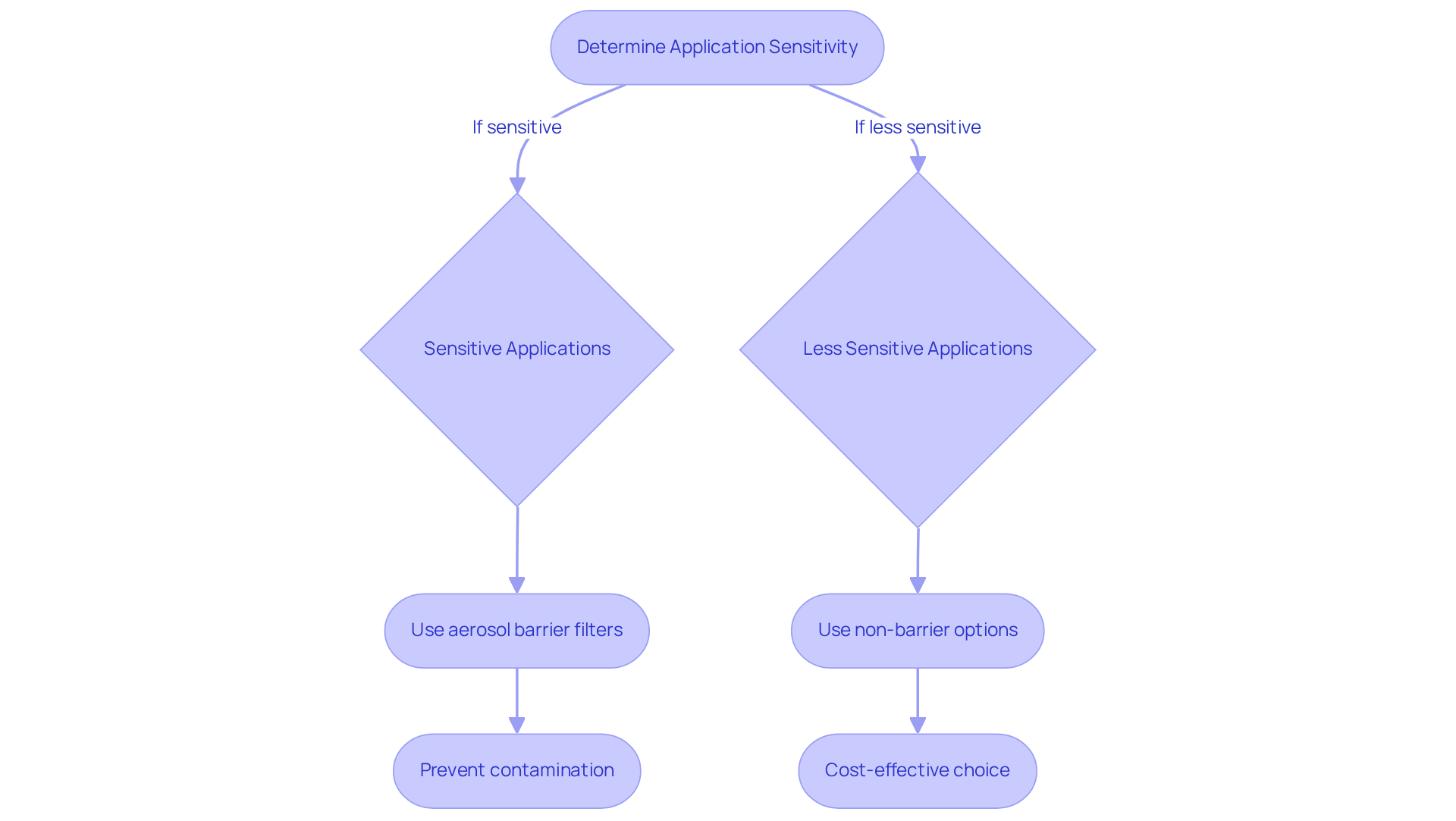
Diverse Size Range: Options from 10 μL to 1250 μL for Every Application
JM Science offers an extensive selection of tips ranging from 10 μL to 1250 μL, catering to a multitude of scientific applications. This diverse range empowers researchers to select the most appropriate tip for their unique requirements, whether they are handling minute volumes in molecular biology or larger quantities in analytical chemistry.
The significance of choosing the correct tip size cannot be overstated, as it is crucial for achieving accurate measurements, directly influencing the precision of experimental outcomes. For example, employing a tip that is excessively large for a small volume can result in inaccuracies, whereas a tip that is too small may fail to accommodate the necessary volume, leading to measurement errors.
Researchers consistently emphasize that the correct tip size not only bolsters the reliability of data but also ensures adherence to experimental protocols. Real-world instances illustrate how improper tip selection can significantly impact results, underscoring the importance of this decision in experimental settings.
By prioritizing the appropriate tip size, research facilities can enhance their experimental precision and elevate the overall quality of their research.
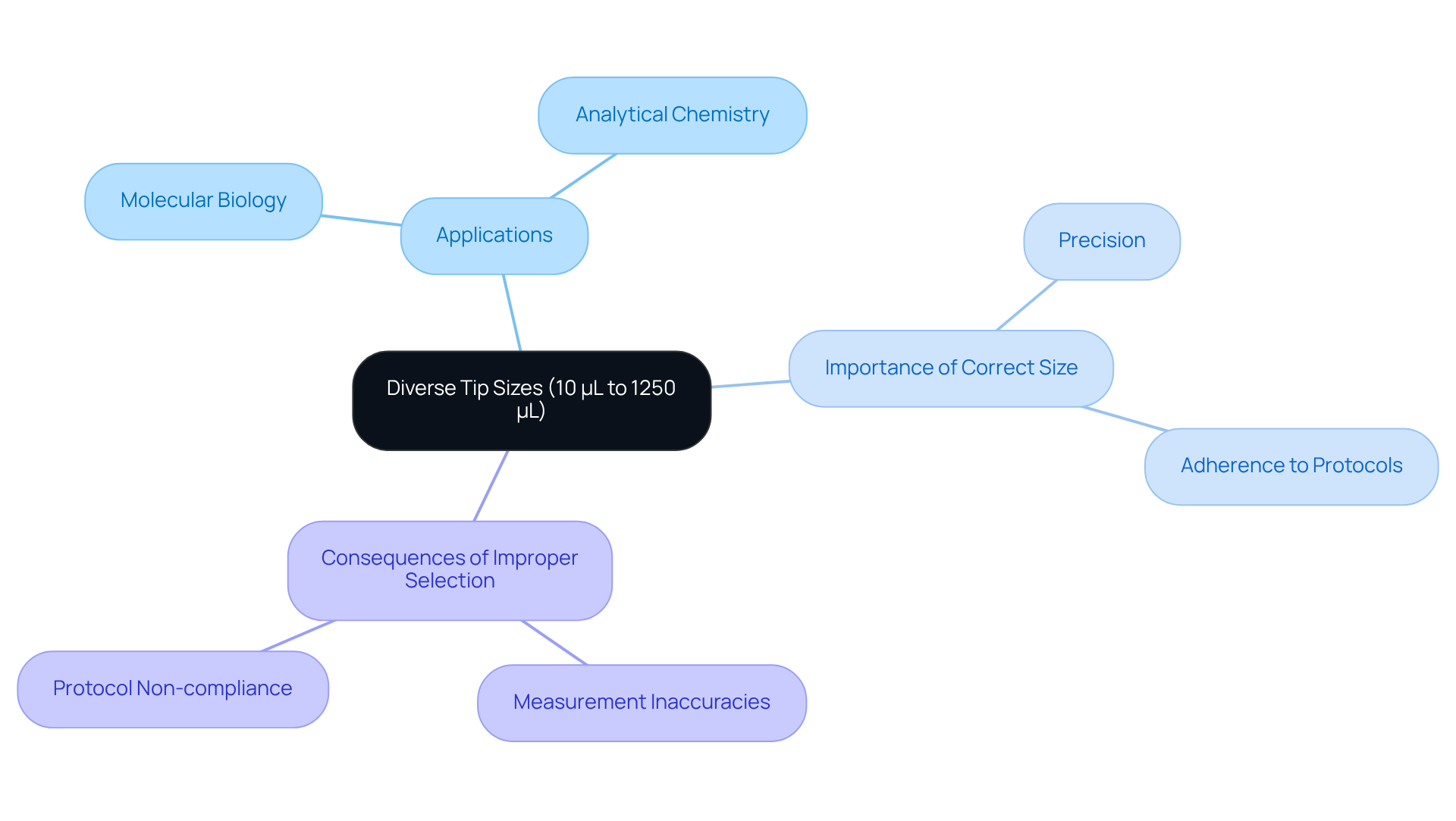
Sterilized Options: Ensuring Safety and Compliance in Laboratory Practices
Gamma-irradiated pipette instruments from JM Science are essential for ensuring safety and compliance in laboratory practices. These meticulously processed sterilized instruments effectively remove contaminants, making them crucial for sensitive experiments, particularly those involving cell cultures and clinical samples. The application of gamma-irradiated instruments significantly reduces contamination risks, which is vital for achieving reliable and accurate outcomes in research.
Clinical researchers have observed that contamination during pipetting can result in erroneous data, underscoring the necessity of utilizing sterilized options to maintain the integrity of experimental results. Research indicates that facilities employing gamma-irradiated instruments experience markedly lower contamination rates, thereby enhancing the dependability of their findings.
Recent advancements in gamma irradiation technology further improve the effectiveness of these instruments, ensuring they adhere to stringent safety standards. As the demand for contamination control escalates, the adoption of gamma-irradiated sampling tools is increasingly becoming a standard practice in facilities committed to excellence in research and diagnostics.
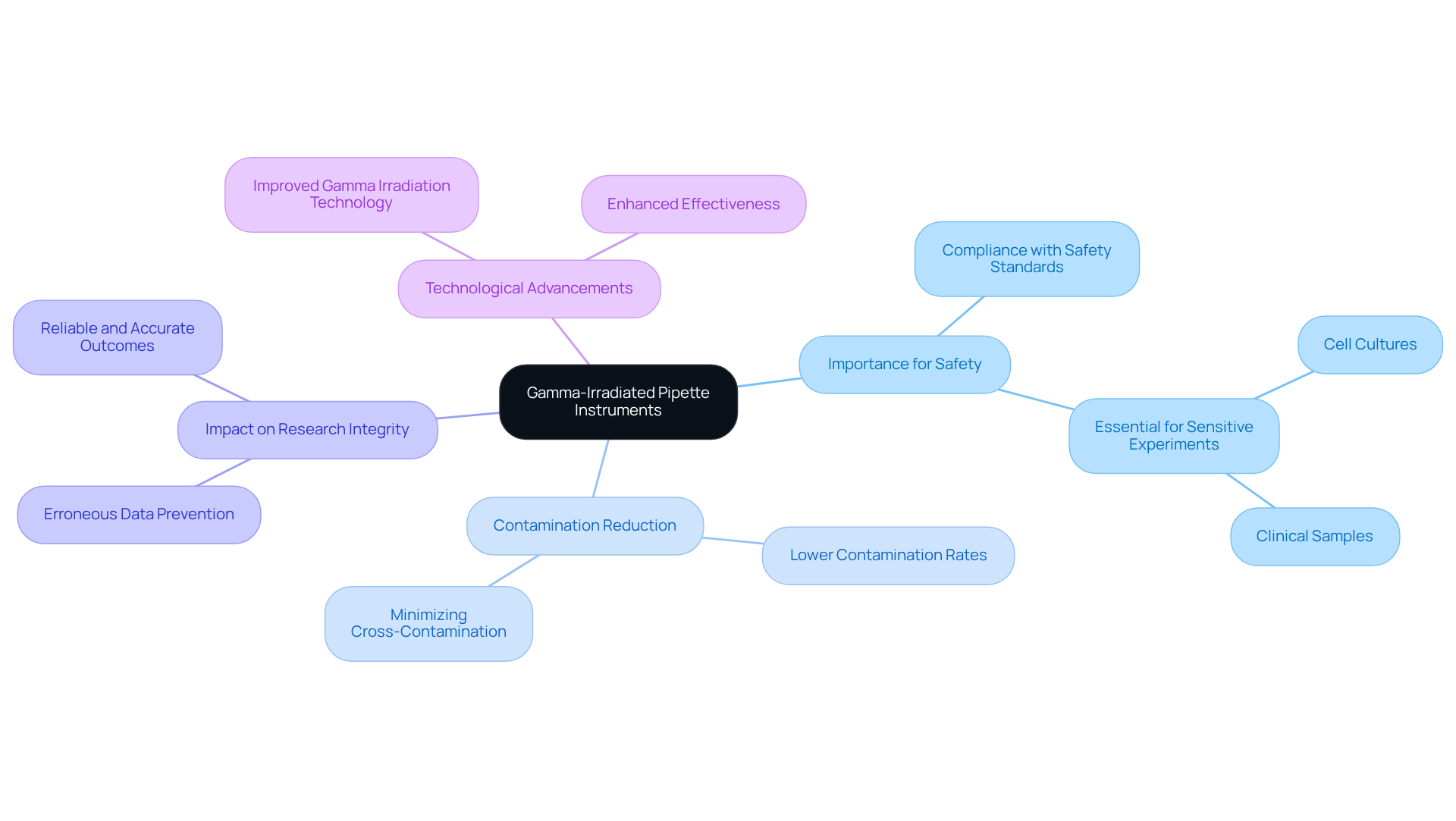
Universal Fit: Compatibility with Leading Pipette Brands
The universal pipette tips design of JM Science's liquid transfer devices guarantees compatibility with a diverse array of top brands, such as Eppendorf, Gilson, and Thermo Fisher. This compatibility empowers facilities to standardize their dispensing nozzles across various instruments, significantly reducing the necessity for multiple nozzle types and optimizing inventory management.
By ensuring a reliable fit, these devices not only enhance the efficiency of liquid management tasks but also contribute to improved adherence and accuracy in scientific operations. Laboratory supervisors have noted that standardizing transfer device ends has led to remarkable improvements in workflow productivity, as it diminishes the time spent on inventory assessments and lowers the risk of errors associated with mismatched ends.
For instance, one lab supervisor stated, 'By switching to universal fit dispensing points, we reduced our inventory management time by 30%, allowing our team to focus more on critical experiments.'
Real-world examples demonstrate that the adoption of universal pipette tips can yield significant enhancements in operational efficiency, making them an essential choice for modern research facilities.
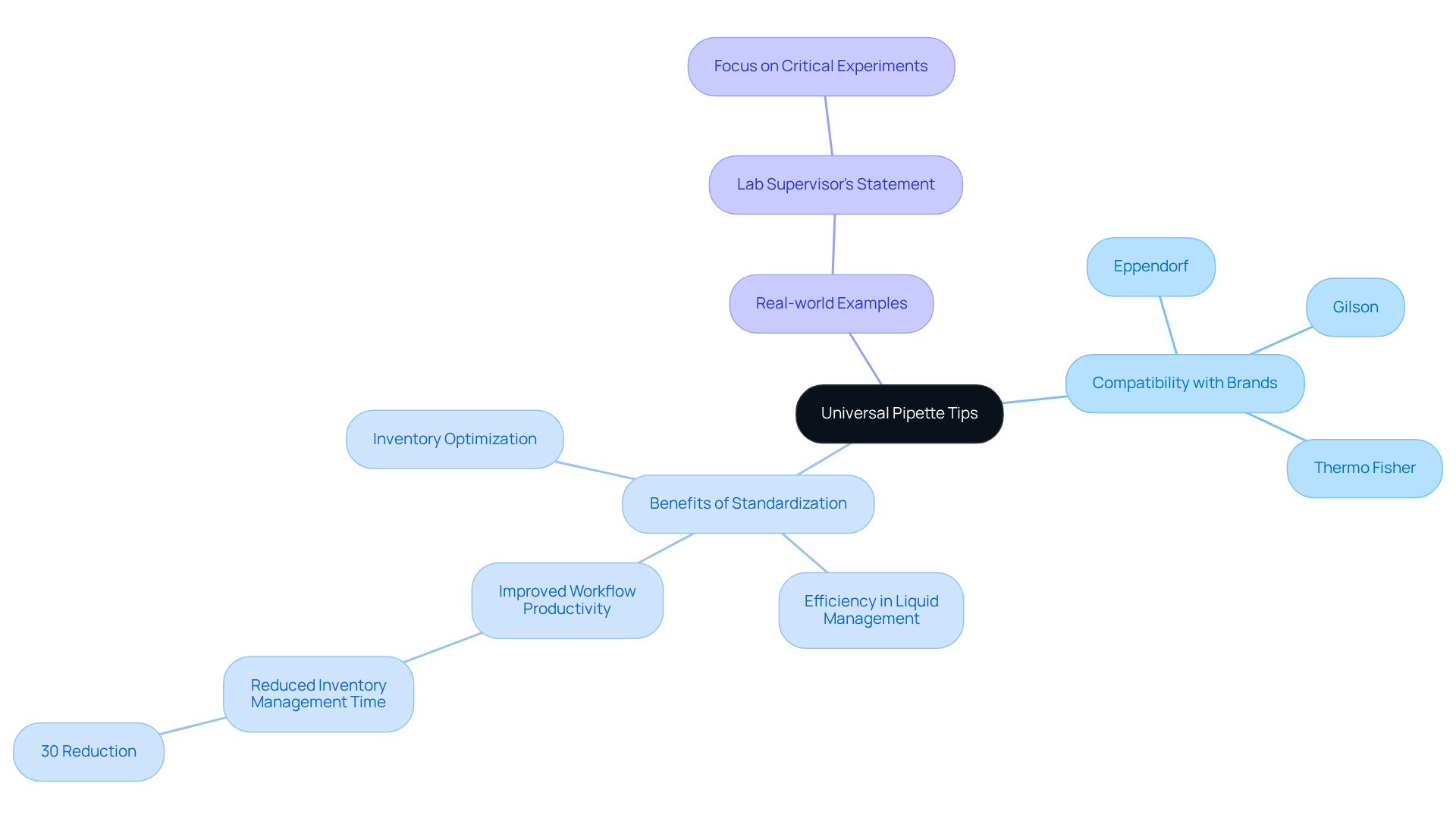
Racked Pipette Tips: Enhancing Organization and Accessibility
Racked laboratory tools from JM Science are pivotal in enhancing accessibility and organization within lab environments. Each rack is meticulously designed to accommodate multiple instruments, facilitating swift and efficient loading into pipettes without the need for manual handling. This innovative design conserves valuable time and upholds sterility, significantly minimizing the risk of contamination.
By maintaining an organized system, researchers can amplify their workflow efficiency, allowing them to focus intently on their experiments. Laboratory technicians have noted that the convenience of access provided by racked instruments is essential for sustaining productivity, as it streamlines the pipetting procedure with universal pipette tips and reduces the likelihood of errors.
With the market for sampling tools projected to reach $3.38 billion by 2029, the demand for effective lab instruments, such as racked sampling devices, continues to escalate. Furthermore, the COVID-19 crisis has underscored the importance of effective lab practices, making the integration of racked sampling tools into research workflows a critical step towards ensuring accurate outcomes.
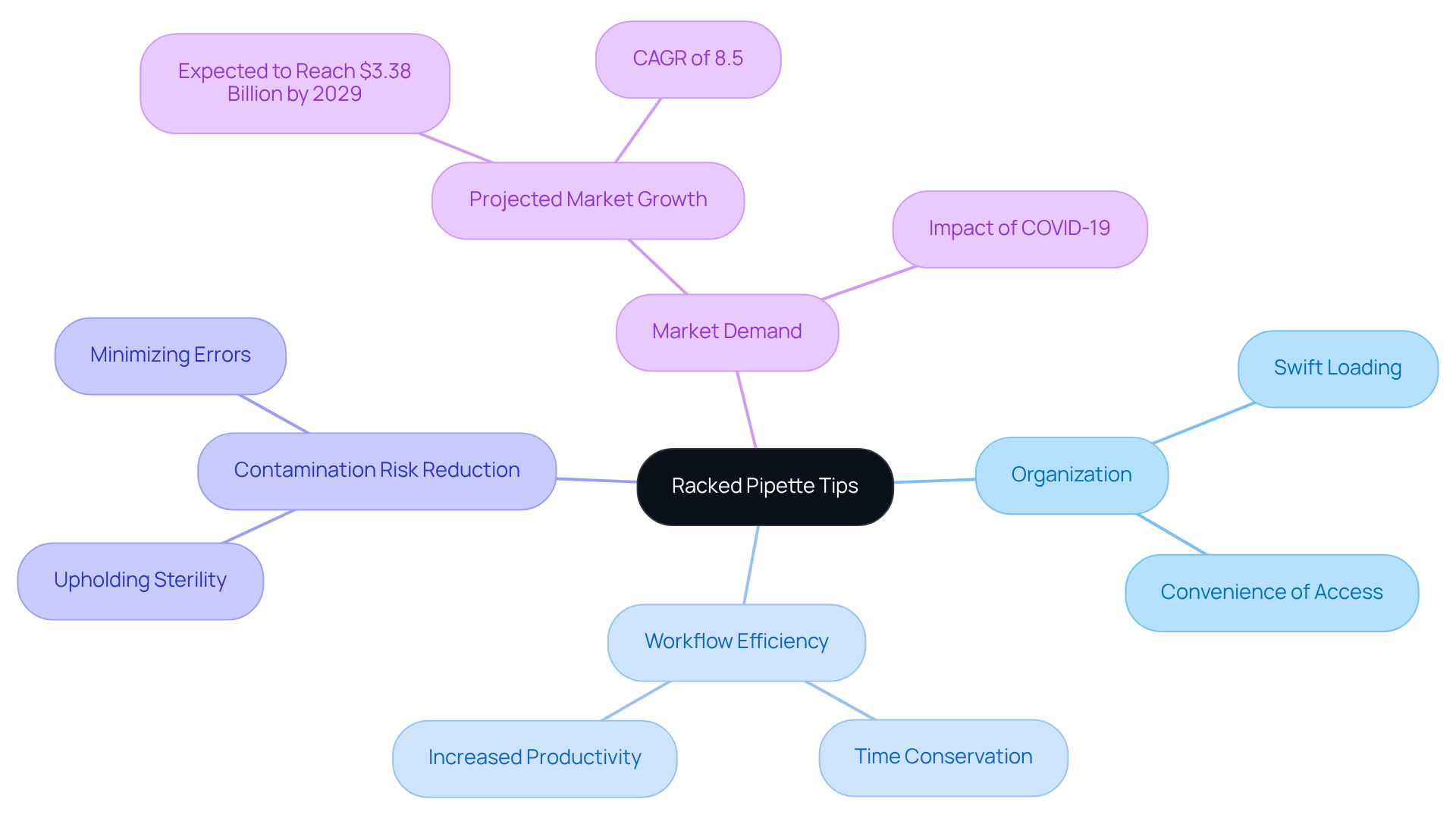
Explore JM Science's Full Range of Universal Pipette Tips for Optimal Performance
To achieve optimal performance in liquid management, it is essential for researchers to explore the comprehensive range of universal pipette tips available from JM Science. These tools, designed with precision, compatibility, and safety in mind, are indispensable for any facility striving to enhance operational efficiency. By carefully selecting the appropriate universal pipette tips, laboratories can ensure accurate results and maintain rigorous quality standards in their research endeavors. This strategic choice not only improves outcomes but also reinforces the laboratory's commitment to excellence.
Conclusion
The exploration of universal pipette tips underscores their essential role in enhancing precision and compliance within laboratory environments. By integrating advanced technologies and materials, these tools not only cater to the diverse needs of researchers but also safeguard the integrity of experimental results, rendering them indispensable in contemporary scientific practices.
Key features such as:
- FlexFit® technology
- X-Resin® material
- Low retention designs
- Aerosol barrier filters
are pivotal in minimizing user fatigue, reducing contamination, maximizing sample recovery, and preventing cross-contamination. Moreover, the extensive range of sizes and compatibility with leading pipette brands highlight the versatility and adaptability of these pipette tips, enabling laboratories to streamline operations and boost productivity.
As the demand for accuracy and compliance in laboratory settings escalates, the adoption of universal pipette tips becomes a strategic imperative. Researchers are urged to evaluate their specific needs and select the appropriate tools that not only enhance efficiency but also uphold the highest standards of quality in their scientific endeavors. Investing in these advanced pipetting solutions is a decisive step towards achieving reliable outcomes and fostering a culture of excellence in laboratory research.




